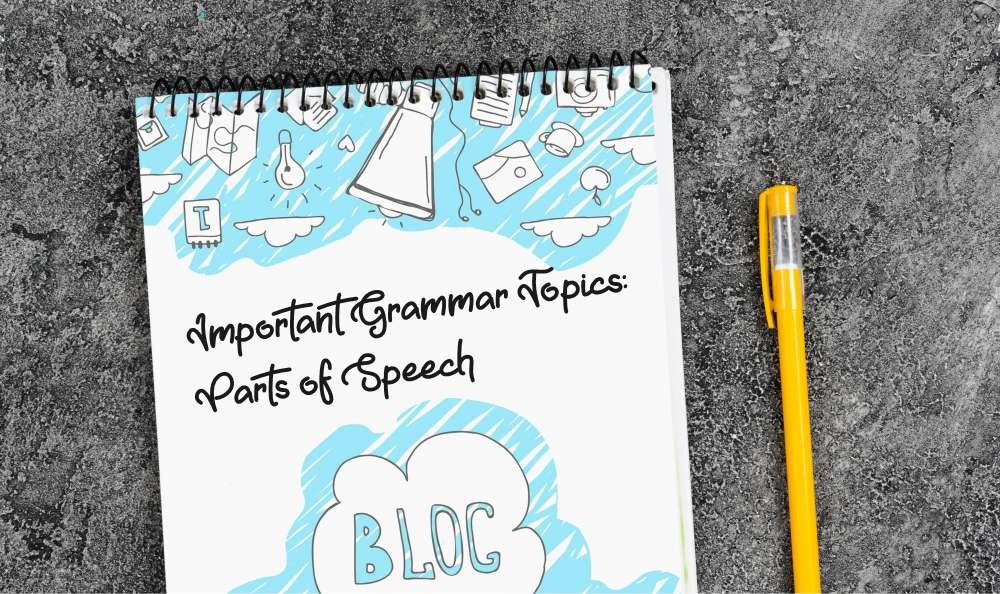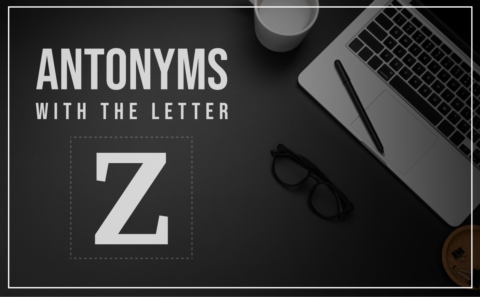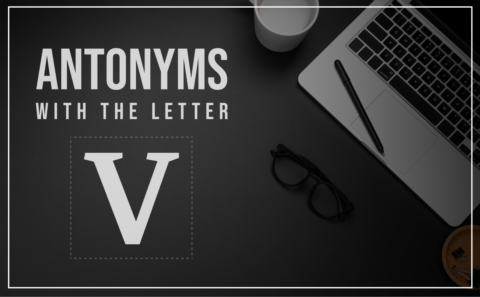Welcome to our comprehensive guide on the Parts of Speech, a crucial topic for competitive exams. We delve into the intricacies of Nouns and Pronouns, providing clear explanations and examples. Let’s make English Grammar easy and approachable!
Preparing for Competitive Exams? You’re at the right place! You will find all the important Grammar Topics in one place, explained in the simplest words.
There are Eight Principal Parts of Speech.
Noun: The name of person, place, animal, or thing.
There are 10 types of Noun:
- Proper Noun – The name of a particular person or place, days of the week, months, languages, religions, and festivals.
For example: Raj was born on Monday.
The Ganges originates from the Himalayas.
- Common Noun – The name given to any and every person or thing of the same kind.
For example: boy, girl, pen, bottle, teacher, etc.
- Collective Noun – The name of a group or collection of things or persons of the same kind as a whole.
For example:
A class of students
A bunch of keys
An army of soldiers
- Abstract Noun – The words that express feelings, emotions, quality, or state.
For example: joy, grief, sorrow, fear, honesty, bravery, childhood, poverty, etc.
- Concrete Noun – A noun that denotes a material object rather than an abstract object. We can see and have physical existence with this noun.
For example: table, chair, water, ball, etc.
- Compound Noun – When two or three nouns appear together to form one noun, it is known as compound Noun.
For example: five-year-old, son-in-law, snowboarding, mailbox, notebook, etc.
- Material Noun – The name of the matter or substance of which things are made.
For example: milk, honey, water, wood, rubber, iron, clay, ice, rice, flour, wheat, oil, sugar, salt, paper, etc.
- Possessive Noun – It is a noun that shows possession over something or somebody. In most cases, an apostrophe along with ‘s’ (‘s) is used to represent possession.
For example: Priya’s car, your book, Mena’s lamp, etc.
- Countable Noun – The nouns that can be counted. Common Nouns and Collective Nouns are included in this category.
For example: boy, girl, cup, bottle, table, chair, etc.
- Uncountable Noun – The nouns that cannot be counted. Abstract Nouns and Material Nouns are included in this category.
For example: honesty, youth, butter, oil, hair, grass, etc.
Pronoun: A word that is used in place of a noun; usually used to avoid repetition.
There are 10 types of pronouns:
- Personal Pronoun – It stands for a person or thing.
The first person: I, we, me, us, mine, ours.
The second person: you, yours.
The third person: he, she, it, they, him, her.
For example: She and I shall go to Delhi this week.
- Possessive Pronoun – It shows possession. Words like yours, mine, hers, his, ours, theirs are possessive pronouns.
For example: She is a good friend of mine.
Lend him your pen; he has lost his.
- Demonstrative Pronoun – It points to the noun for which it has been used.
For example: This is my pen.
- Interrogative Pronoun – The question words that replace the noun in the sentence.
For example: Who are you?
- Relative Pronoun – It shows the relationship between the two nouns in the sentence. The noun to which a relative pronoun relates is called its antecedent.
Who, which, what, whom, and that.
For example: The boy who is standing outside the class is my brother.
- Reflexive Pronoun – It is used to indicate that the person or thing does something to himself or herself. The action of the subject reflects on the subject of the sentence. The subject and the object are the same person or thing.
‘-self’ is added to my, your, him, her, it.
‘-selves’ is added to our, your (plural), them.
For example: I hurt myself.
- Emphatic Pronoun – It is used for emphasizing.
For example: He himself did his work.
I will do it myself.
- Indefinite Pronoun – It refers to persons or things in general, rather than any person or thing in particular.
For example: one, none, all, some, somebody, anybody, everybody, nobody, someone, anyone, everyone, no one, something, anything, everything, nothing.
- Reciprocal Pronoun – It refers to pronouns that are predicted to bear the same relation to one another.
For example: Jay and Aryan are waving to each other.
- Distributive Pronoun – It refers to persons or things one at a time. Distributive Pronouns are always followed by verbs in the singular number.
For example: Each of you will receive a pen.
Verb: A word that expresses action.
- Ordinary Verb – They are further divided into:
Finite Verbs change according to the subject.
For example: I play, he plays, they play.
Finite Verbs are further classified into:
Transitive Verbs have an object.
For example: Sita sings a song.
Intransitive Verbs do not have an object.
For example: The Sun rose.
The soldier fought bravely.
Non-finite Verbs do not change according to the subject.
- Auxiliary Verb – They are also known as helping verbs. They are used along with the main verbs to form tenses. They are further categorized into:
Primary auxiliaries: is, am, are, was, were, has, have, had, do, does, did.
Modal auxiliaries: can, could, may, might, must, will, would, shall, should, used to, need, dare.
Adjective: A word that describes the noun or pronoun. Adjectives usually represent: Which? What? How many/ How much?
There are 10 types of adjectives:
- Adjective of Quality – It indicates the quality, kind, or state of a noun. Also known as Descriptive Adjectives.
For example: An old man, A huge tree, a silver bangle.
- Adjective of Quantity – It answers the question ‘how much?’ or ‘how many?’
For example: There is little water in the bottle.
Ali lost all his wealth.
- Adjective of Number – It indicates the number of nouns. It answers the question ‘how many?’ or ‘in what way or order?’
Definite Numeral Adjective denotes exact numbers: one, two, first, third, etc.
Indefinite Numeral Adjective does not denote exact numbers: many, few, several, certain, etc.
Distributive Numeral Adjective refers to either, neither, each, every, etc.
For example: Some books are kept on the table.
There are only ten people in the room.
- Demonstrative Adjective – It indicates which or what of a noun is referred to.
Keywords: this, that, these, those, a, an, the, other, same, such, etc.
For example: These are my pens.
That is a huge tree.
Such questions should not be asked.
- Distributive Adjective – It indicates one at a time.
keywords: each, every, either, neither, etc.
For example: Each person has to carry his/her own burden.
The judge agreed with neither side.
- Interrogative Adjective – It is used with nouns to ask questions. ‘Whose’ is used to ask questions related to persons, ‘which’ is used to ask questions related to things or persons, and ‘what’ is used to ask questions related only to things.
For example: What kind of a person are you?
Whose notebook is this?
- Possessive Adjective – It indicates possession.
For example: This is my car.
Is that your home?
- Proper Adjective – It is formed from Proper Noun.
For example: Indian, Chinese, Roman, Shakespearean, etc.
- Emphasizing Adjective – It is used to emphasize an opinion about something.
For example: I saw the theft with my own eyes.
She is her own favorite.
- Relative Adjective – It is used with nouns to relate clauses. Words like whose, which, and what are used.
For example: I know that girl who is standing outside.
This is the house that my father built.
Adverb: A word that modifies a verb, an adjective, or another adverb. Adverbs usually represent: When? Where? How? Why? Conditions and degrees.
There are 6 types of adverbs:
- Adverb of Time – It indicates the time of the action.
For example: We will reach your place soon.
I exercise daily.
- Adverb of Place – It indicates the place of action.
For example: He lives there.
Your clothes are nowhere to be found.
- Adverb of Manner – It tells us ‘in what manner’ or ‘how’ the action takes place.
For example: Sheela sang beautifully.
The child slept soundly.
- Adverb of Frequency – It indicates how often the action takes place.
Keywords: often, always, seldom, never, sometimes, once, twice, thrice, daily, almost, rarely, extremely, firstly, yearly, continuously, constantly, frequently, etc.
For example: She always does her work properly.
I have told you once.
- Adverb of Degree – It indicates ‘how much’ or ‘to what extent’ or ‘in what degree’ a thing is done.
Keywords: almost, so, most, very, fully, pretty, enough, rather, too, deeply, fairly, entirely, any, really, greatly, badly, as, completely, far, well, only, just, altogether, etc.
For example: I had a little work to finish.
This dress is very beautiful.
- Interrogative Adverb – It is used to ask questions.
Keywords: why, when, where, how, how far, how long, how much, how many, etc.
For example: Where were you yesterday?
Why did you come so early today?
Preposition: A word that is placed before a noun or a pronoun. The preposition indicates the relationship between the noun/pronoun with some other word in the sentence.
- Preposition of Place: at, in, on, up, down, near, by, under, above, beyond, against, beside, to, among
- Preposition of Time: at, on, in, during, by, for, and since.
- Preposition of Movement and Direction: to, towards, into, at, for, and against.
- Prepositional Phrase: It is a phrase that begins with a preposition introducing a noun form.
Conjunction: A word that joins two words or sentences. There are 2 types of conjunctions:
- Coordinate Conjunctions: They join two independent sentences together.
For example: She is old but she runs fast.
They lost the match yet they are happy.
- Subordinate Conjunctions: They join a dependent clause with the principal clause.
For example: The patient had died before the doctor arrived.
We eat in order to live.
Interjection: A word that expresses surprise or emotions.
For example: Hurry! We won the match.
Alas! I lost my bag.








